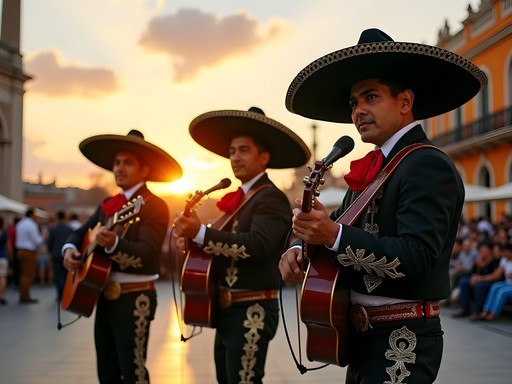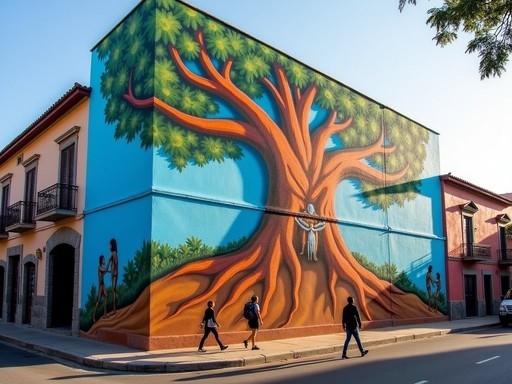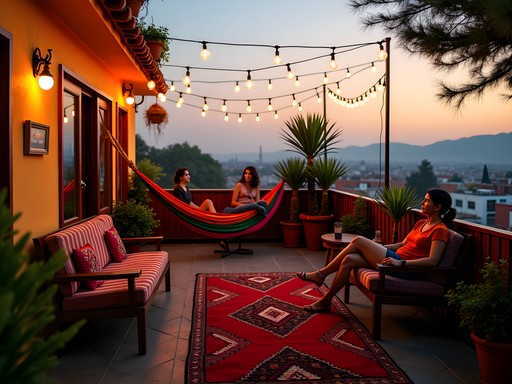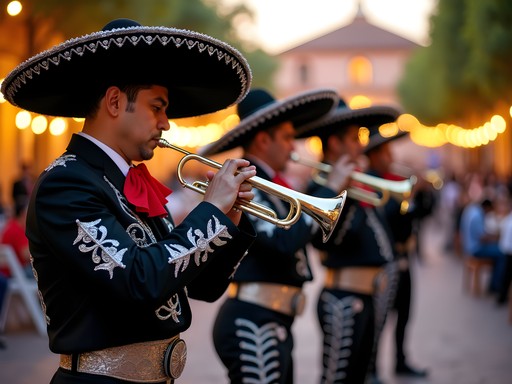Disclosure: This article contains affiliate links. We may earn a commission from purchases at no extra cost to you, which helps our travel content.
There's something deliciously intoxicating about Guadalajara that reminds me of the perfect pastry—layered, complex, and leaving you craving more. After decades of exploring underground spaces from Welsh caves to Tokyo nightclubs, I found myself drawn to Mexico's second-largest city not for what lies beneath, but for the cultural richness that rises above. At 57, I've learned that the most profound adventures often happen when we abandon our comfort zones—and Guadalajara, with its pulsating mariachi rhythms and centuries-old traditions, offered precisely that promise. This fall, I traded my pastry chef's apron and St. Louis routine for a week of cultural immersion in the heart of Jalisco. What followed was a sensory feast that would rival any dessert I've ever created—vibrant, sweet, occasionally bitter, but ultimately satisfying in ways I couldn't have imagined.
The Heartbeat of Mariachi at Plaza de los Mariachis
The first rule of experiencing Guadalajara properly? Follow the music.
After a restorative night's sleep at my charming boutique hotel in the centro histórico, I found myself drawn to Plaza de los Mariachis like a moth to flame. This isn't just any square—it's the birthplace of mariachi music, a UNESCO-recognized cultural heritage that pulses through Mexico's veins.
I arrived just before sunset, when the plaza transforms from a sleepy gathering spot to a vibrant performance space. Mariachi bands in their elaborate charro outfits—those stunning embroidered suits that put my most elaborate pastry decorations to shame—began assembling at the edges of the plaza. The musicians, some younger than my daughter and others with faces weathered by decades of performance, tuned their instruments with practiced precision.
'You must try the birria while you listen,' whispered an elderly woman who noticed me hovering uncertainly at the edge of the action. Following her advice led me to a small family-run stall where I devoured a bowl of rich, aromatic goat stew that would make any chef weep with joy.
As night fell, the music swelled. Unlike the carefully choreographed performances in tourist restaurants, these mariachis played with raw emotion—sometimes competing, sometimes collaborating in an organic symphony that felt both ancient and immediate. I found myself seated between a young Mexican couple celebrating an anniversary and a group of elderly locals who'd been coming to the plaza every Friday for decades.
'Music speaks when words cannot,' one white-haired gentleman told me in careful English, noticing my overwhelmed expression as the violins soared during a particularly moving rendition of 'El Son de la Negra.' In that moment, despite not understanding every Spanish lyric, I felt the emotional weight of each note.

💡 Pro Tips
- Visit Plaza de los Mariachis in the evening (after 7pm) when the atmosphere is most authentic
- Bring small bills if you wish to request songs (100-200 pesos per song is customary)
- Try the local birria (goat stew) from small family vendors for the most authentic flavor
The Liquid Soul of Mexico: Tequila Trail Adventures
No cultural immersion in Guadalajara would be complete without exploring the birthplace of Mexico's most famous spirit. The Tequila Trail, a UNESCO World Heritage landscape about an hour from the city, called to me like the limestone caves of my youth—except here, the treasures weren't stalactites but agave plants stretching toward the horizon like blue-green sea urchins.
Rather than joining a large tour group, I opted for a small-group experience with a local guide named Carlos who promised an authentic journey beyond the commercial distilleries. Before setting out, I made sure to pack my insulated water bottle —essential for staying hydrated in the Mexican sun while sampling tequila's many expressions.
'Tequila is not just for shooting with lime and salt,' Carlos explained as we walked through fields where jimadores (agave farmers) demonstrated the ancient art of harvesting. 'That's like using a fine pastry cream to make instant pudding,' I replied, earning a knowing smile.
The highlight was visiting a small, family-run distillery where production methods haven't changed for generations. The patriarch, Don Miguel, guided us through each step of the process with the same reverence I've always had for laminating perfect croissant dough. When we reached the tasting room—a simple space with wooden tables worn smooth by time—Don Miguel poured five varieties of tequila into small clay copitas.
'First, you smell,' he instructed in Spanish as Carlos translated. 'Then you sip slowly, letting it touch every part of your tongue.'
I closed my eyes as the blanco tequila—unaged and vibrant—revealed notes of pepper and citrus. The reposado followed with vanilla and caramel notes from its time in oak barrels. By the time we reached the extra añejo, aged over three years, I understood why Mexicans consider good tequila something to be savored, not slammed.
'In Japan, my mother taught me that food and drink connect us to the earth,' I shared with the group as we compared tasting notes. 'Here, I can taste the volcanic soil, the sun, even the hands that crafted it.'

💡 Pro Tips
- Book smaller tours (8 people or fewer) for more intimate distillery experiences
- Consider hiring a driver or staying overnight in Tequila town if you plan to sample generously
- Bring cash for purchasing bottles directly from small producers—their limited-production tequilas rarely make it to export
Tlaquepaque: Where Artistry Meets Atmosphere
Sometimes the most profound cultural experiences happen in the smallest places. Such was my discovery of Tlaquepaque, a suburb-turned-arts-district that captures Guadalajara's creative spirit in a walkable village atmosphere.
I arrived mid-morning, when the colonial streets were just coming to life. Unlike the commercial galleries I've visited across Europe and Asia, Tlaquepaque feels refreshingly authentic—artists actually work here, crafting everything from blown glass to intricate textiles before your eyes.
My first stop was Galería Sergio Bustamante, showcasing the surrealist works of one of Mexico's most celebrated artists. His dreamlike sculptures—humans with butterfly wings or elongated limbs—reminded me of the strange formations I've encountered deep in Welsh caves, where nature becomes sculptor.
'Each piece tells a story,' explained the gallery attendant, noticing my fascination with a bronze figure whose head opened to reveal a miniature universe inside. 'But the meaning is for you to discover.'
Wandering further, I found myself in a courtyard where a family of potters had set up their wheel. The grandmother, hands gnarled but steady, shaped clay with the same intuitive precision I use to create delicate sugar work. When she invited me to try, my years of pastry piping translated surprisingly well to clay work, earning appreciative nods from three generations of artisans.
By early afternoon, El Parián—the district's central plaza—filled with locals and visitors alike. Mariachi bands circulated between tables as waiters delivered micheladas and regional specialties. I settled in with my travel journal to capture the sensory details before they faded: the weight of handmade ceramics, the scent of copper being worked in open-air studios, the taste of tamarind candy from century-old recipes.
What struck me most was how Tlaquepaque balances tourism with genuine artistic production. Unlike so many 'arts districts' that become sanitized versions of themselves, this place maintains its soul—artists live and create here, continuing traditions while embracing innovation.
'We don't make things differently for tourists,' a silversmith told me as I admired his contemporary takes on traditional Huichol designs. 'We make what speaks to us, and hope it speaks to others too.'

💡 Pro Tips
- Visit Tlaquepaque on weekdays to see artisans actively working in their studios
- Look for the 'Hecho a Mano' (handmade) certification to ensure authentic craftsmanship
- Many studios offer mini-workshops—ask about hands-on experiences if you're interested in the creative process
Mercado Libertad: A Sensory Symphony
As a pastry chef, markets have always been my temples—places where ingredients speak their truths and cultural identity reveals itself through food. Guadalajara's Mercado Libertad (also known as Mercado San Juan de Dios) is no ordinary market; it's the largest indoor market in Latin America, a three-story labyrinth housing over 2,800 vendors selling everything from handcrafted cowboy boots to medicinal herbs.
I arrived early on a Tuesday morning armed with my trusty crossbody bag —perfect for keeping essentials secure while leaving my hands free to examine treasures and sample foods. The ground floor assaulted my senses immediately: mountains of chiles in every hue, from forest green poblanos to fiery red chiltepins; pyramids of tropical fruits I recognized from my mother's Japanese kitchen; and the hypnotic rhythm of butchers' cleavers creating percussion against wooden blocks.
'You must try before you buy,' insisted a fruit vendor, slicing open a cherimoya for me to sample. Its custardy flesh—somewhere between pineapple and banana with hints of vanilla—transported me instantly to my first attempts at making crème pâtissière under my mother's watchful eye.
The market's second floor revealed a vast food court where local families—not tourists—gathered for breakfast. Following my nose and the longest queue, I found myself at a stall specializing in birria tacos. The elderly cook dipped tortillas in rich consommé before grilling them with tender goat meat and serving them with a constellation of accompaniments: lime wedges, diced onions, cilantro, and salsas of varying intensity.
'This recipe is from my grandmother's grandmother,' she told me proudly when I complimented her craft. We exchanged knowing smiles—the universal language of those who understand food as heritage.
The third floor offered a treasure trove of artisanal goods, from leather to textiles. I found myself drawn to a stall selling traditional Mexican cooking implements: clay cazuelas, wooden molinillos for frothing chocolate, and metates for grinding spices. The vendor, noticing my professional interest, demonstrated how each tool was used, sharing techniques that haven't changed for centuries.
'These aren't souvenirs,' he explained, placing a hand-carved molinillo in my palm. 'These are our history, still alive.'

💡 Pro Tips
- Visit early (before 10am) to see the market at its most authentic and avoid crowds
- Bring small bills and change for easier transactions with vendors
- For the best food experiences, look for stalls where locals are eating, not those with English menus
Twilight Tales: Guadalajara After Dark
While my Underground Rising blog typically leads me to literal caves or thumping nightclubs, Guadalajara revealed that sometimes cultural depths are best explored after sunset in more subtle venues. As a solo female traveler in her fifties, I've learned that night exploration requires both confidence and common sense—especially in unfamiliar cities.
My evening adventures began with a Lucha Libre match at Arena Coliseo, where Mexico's theatrical wrestling tradition unfolded in a symphony of acrobatics and dramatics. The crowd—grandmothers beside tattooed twentysomethings, families sharing popcorn with businessmen still in work attire—demonstrated how deeply this tradition cuts across social boundaries.
'The masks represent archetypes,' explained my seatmate, a university professor who attended matches weekly. 'The técnicos are heroes, the rudos are villains, but the best wrestlers make you question which is which.' As someone who's spent decades navigating the dual worlds of my Japanese and Welsh heritage, I found unexpected resonance in these masked performers living between identities.
Later in the week, I discovered Cantina La Fuente, one of Guadalajara's oldest traditional cantinas. Once male-only establishments, many cantinas now welcome women, though I noticed I was still in the minority as I entered the wood-paneled space illuminated by warm amber lights.
'What brings you here alone?' asked the bartender as he placed a small plate of botanas (complimentary snacks) before me alongside my mezcal.
'I'm exploring the city's soul,' I replied, earning a knowing nod.
The cantina filled as evening deepened, with multi-generational groups gathering around tables. When an elderly man pulled out an acoustic guitar and began playing quietly in the corner, conversations hushed. His weathered fingers coaxed melancholy notes that spoke of love and longing without needing translation.
Perhaps my most unexpected nocturnal discovery was Chapultepec Avenue on Thursday night, when the weekly Via RecreActiva transforms the street into a pedestrian playground. Unlike the underground clubs I've documented across Asia and Europe, this was a different kind of nightlife—families strolling, street performers creating impromptu shows, and food vendors illuminated by string lights creating a carnival atmosphere.
I found myself drawn to a small crowd gathered around an elderly couple dancing danzón with the precision of those who've moved together for decades. Their formal attire and graceful movements created an island of elegance amid the cheerful chaos. When they finished their set, I approached to compliment their performance.
'Fifty-two years of marriage,' the gentleman told me with a wink. 'Dancing keeps us young.' At 57, with cave mud still occasionally lodged under my fingernails, I couldn't help but smile at the many paths to ageless adventure.

💡 Pro Tips
- For Lucha Libre, purchase tickets in advance and opt for mid-level seats for the best view of the action
- Traditional cantinas often serve free botanas (snacks) with drinks—a perfect light dinner option
- Check local listings for the Via RecreActiva schedule, typically Thursday evenings in the Chapultepec area
Final Thoughts
As my week in Guadalajara drew to a close, I found myself sitting in the tranquil courtyard of Hospicio Cabañas, contemplating the José Clemente Orozco murals that have witnessed nearly a century of visitors. Like the best desserts I've created—those balancing sweetness with complexity—Guadalajara offers layers of experience that continue to reveal themselves long after the initial encounter. This city taught me that cultural immersion isn't about checking attractions off a list but about allowing yourself to be present in moments of authentic connection: the shared smile with a market vendor, the collective gasp of a lucha libre audience, the silent appreciation of centuries-old craftsmanship. For couples seeking deeper travel experiences, Guadalajara offers something increasingly rare: a destination where tourism hasn't overshadowed tradition, where each day brings new discoveries without manufactured experiences. As I packed my molinillo and hand-painted ceramic mug—souvenirs that will actually be used rather than displayed—I knew I'd return. Some places, like some recipes, demand revisiting to fully appreciate their subtleties.
✨ Key Takeaways
- Guadalajara offers authentic cultural immersion opportunities beyond the typical tourist circuit
- The city balances traditional experiences with contemporary energy, making it ideal for couples with varied interests
- Fall visits provide perfect weather and coincide with cultural events like Day of the Dead preparations
📋 Practical Information
Best Time to Visit
October-November (fall)
Budget Estimate
$75-150 per day per person (mid-range)
Recommended Duration
5-7 days
Difficulty Level
Beginner
















Comments
globestar
This post brings back so many memories! I was in Guadalajara last year and the Plaza de los Mariachis was definitely a highlight. We went around 7pm and it was just coming alive - ended up staying until midnight listening to different groups and drinking tequila. The Mercado Libertad was overwhelming though - so many vendors and I got completely lost twice! Did anyone else find the food section upstairs? Those tortas ahogadas were life-changing!
Sakura West
So glad you enjoyed it! And yes - those tortas ahogadas are incredible. I actually went back twice for them!
globestar
Twice?! I'm jealous. I still dream about that sauce!
wanderlustphotographer
Your shots of the mariachi musicians are incredible! What camera settings did you use for those low-light plaza photos?
Sakura West
Thank you! Those were shot with a prime 35mm lens at f/1.8, ISO 3200. The plaza has enough ambient light that you can capture the atmosphere without flash.
Sarah Powell
Sakura, your description of Tlaquepaque transported me right back there! I spent a month in Guadalajara last fall as a solo female traveler and found it incredibly welcoming. For anyone planning a visit, I'd add that Sunday mornings in Tlaquepaque are magical - locals fill the square, there's often free cultural performances, and the restaurants serve the most amazing brunch. The ceramic workshops Sakura mentioned are indeed worth visiting, but try to go on weekdays when you can actually see the artisans at work. Also, for photography enthusiasts, the light in the courtyards around 4-5pm creates the most stunning shadows through the archways.
Sakura West
Sarah, you're so right about the Sunday mornings! I missed mentioning that. And that golden hour light in Tlaquepaque is a photographer's dream. Did you make it to the Tonalá market too?
Sarah Powell
Yes! Tonalá on Thursday was incredible - less touristy than Tlaquepaque but just as artistic. Found some beautiful handblown glass pieces there that I somehow managed to get home intact!
roamace
Which tequila distillery was your favorite? Planning to do the trail but not sure we have time for all of them.
wanderlustphotographer
Not Sakura but I did this last month! Casa Sauza was my favorite - less crowded than Jose Cuervo and their extra añejo tasting was incredible. Make sure you have your pocket translator if your Spanish isn't great. The detailed tour is only in Spanish at some distilleries.
roamace
Thanks for the recommendation! Will definitely check out Casa Sauza.
smartseeker
Those Orozco murals are AMAZING in person! Great photos!
Frank Garcia
Brilliant post that captures Guadalajara's essence! I backpacked through Mexico last year and spent 10 days in GDL. One tip for budget travelers: the public buses to Tlaquepaque are super cheap (about 10 pesos) and run frequently. Just ask locals which route to take - they're incredibly helpful. Also, if you visit Jose Cuervo, book directly on their website rather than through hotels - saved me nearly 30%. The mercado food stalls are indeed a highlight - I'm still dreaming about those tortas ahogadas!
adventuremate
This is exactly the kind of cultural experience I'm looking for! Heading to Guadalajara next month - did you feel safe walking around Plaza de los Mariachis at night?
Sakura West
Absolutely! The plaza is well-lit and full of people enjoying music until late. Just use normal city precautions - I never felt unsafe there.
adventuremate
Thanks so much! Can't wait to experience it firsthand.
Sophia Gomez
Sakura, your tequila trail section brought back such vivid memories! I visited during a business conference last year and managed to sneak away for a day trip to José Cuervo. The contrast between the industrial production areas and those beautiful agave fields is fascinating. Pro tip for anyone going: the morning tours are less crowded and the light is magical for photos of the agave landscapes. Also, don't miss Hospicio Cabañas - those Orozco murals deserve more time than most visitors give them. I spent three hours there and could have stayed longer. The way the light changes throughout the day completely transforms the artwork.
Sakura West
So true about Hospicio Cabañas! I went twice - morning and afternoon - for exactly that reason. The way Orozco used the natural light in his composition is genius.
starbackpacker
Just booked my tickets after reading this! Can't wait to explore Mercado Libertad - those food stalls look incredible. Anyone know which section has the best birria?
coolrider
Second floor, northeast corner! Look for the stall with the longest line of locals. You won't regret it!
happyhero
Those mariachi photos are AMAZING! Captures the spirit perfectly!
Sakura West
Thank you! The lighting at Plaza de los Mariachis in the evening is a photographer's dream.
Venture X
Premium card with 2X miles, $300 travel credit, Priority Pass